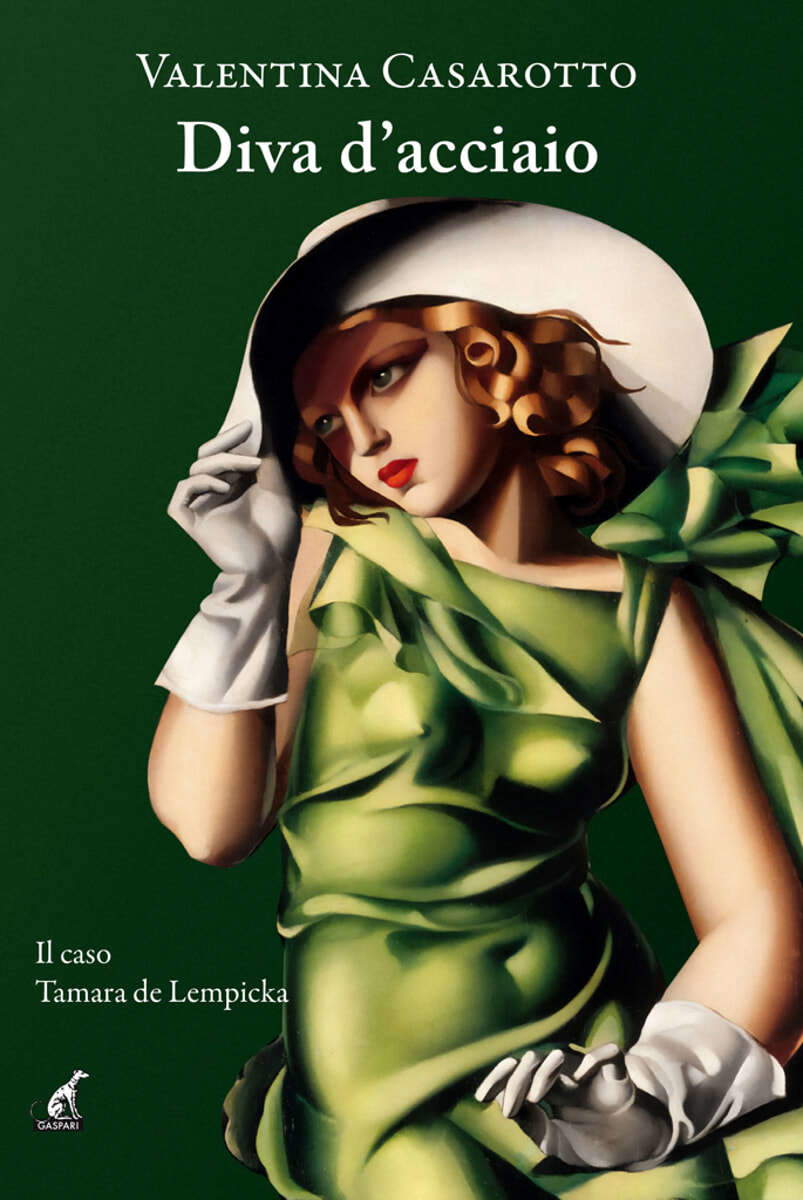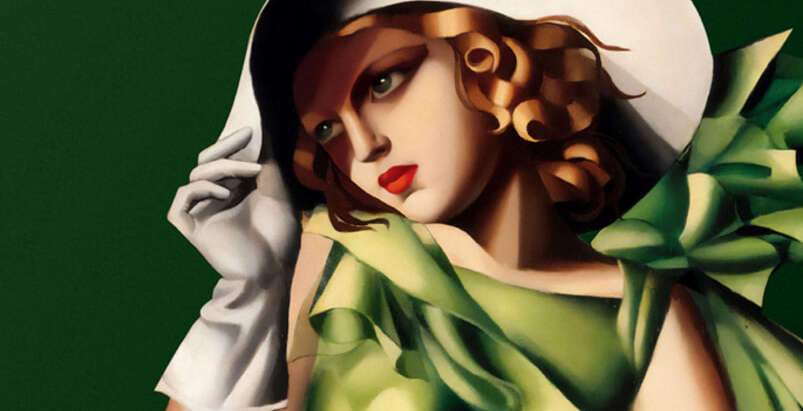Steel Diva: Valentina Casarotto's novel about Tamara de Lempicka
It is a journey into the life of Tamara de Lempicka (Maria Rozalia Gurwik-Górska; Warsaw, 1898 - Cuernavaca, 1980) that to which Valentina Casarotto, art historian and writer, introduces the public with her new novel Diva d’acciaio, a sort of fictionalized biography of the great Polish artist told through the point of view of those who knew her. Released a few months ago, but still the subject of a busy schedule of presentations throughout Italy, Diva d’acciaio, published by Gaspari (287 pages, 19.50 euros, ISBN 9788875419455) is a novel that explores the intricate threads of the artist’s life from an unusual point of view.
The story opens in 1938. Tamara de Lempicka, with her magnetic charisma, is about to cross the ocean, upsetting the balance and attracting the attention of the American authorities, suspicious of her connections with Russia. It is against this backdrop fraught with suspicion and uncertainty that the head of the FBI, J. Edgar Hoover, fearing that the painter may be a spy in the pay of the Russians, hires Clare Bryce, a determined New York journalist inspired by the historical figure of Clare Boothe Luce (New York, 1903 - Washington, 1987), to join an undercover mission, charged with unraveling the secrets and deceptions shrouding the enigmatic figure of the painter.
Clare’s journey through Europe is thus transformed into a compelling and nuanced adventure, an immersion into the depths of Tamara de Lempicka’s personality and the meanderings of her art. Through encounters with the painter’s friends, lovers and rivals, Clare seeks to gather as much information as possible about a figure who embodies the quintessence of elegance and rebellion, opening windows into worlds of passion, corruption and decadent beauty.
Numerous characters were encountered by the journalist during her wanderings through Europe on the eve of World War II. First Count Carl Johannes Dahlberg, a Swedish diplomat who had helped Tamara de Lempicka leave St. Petersburg immediately after the Russian Revolution. Then again, the eccentric American patron Winnaretta Singer, the Futurist poet Filippo Tommaso Marinetti, Gabriele d’Annunzio’s maid, and the perturbing singer Suzy Solidor who would even go so far as to seduce Clare Bryce. A long and subtle journey in which emotions and biographical elements mix naturally, without ever upsetting the delicate balance of the narrative.

At the center of it all shines Tamara de Lempicka, a woman who defied the boundaries and prejudices of her era to establish herself as one of the most daring and innovative artists of the 20th century. Yet, the artist never appears in the first person during the narrative: the portrait of her personality, both human and artistic, is drawn through the characters Clare Bryce finds herself interviewing during her journey. Her childhood spent in Russia, her highly envied marriage to wealthy lawyer Tadeusz Lempicki (later taken prisoner by the Bolsheviks, then released thanks to Tamara’s connections), her move to Paris, her success as an artist, her loves, including her sapphic ones, and her second marriage to Baron Raoul Kuffner de Diószegh. The whole story of Tamara de Lempicka up to her move to the United States is followed by Valentina Casarotto through the narration of the characters who take turns along the pages of the novel.
The plot of Diva d’Acciaio thus offers fertile ground for in-depth study and analysis: in addition to the main narrative, which follows the events of Tamara de Lempicka and Clare Bryce, the novel presents a series of subplots, of individual character stories that further enrich the narrative fabric. Among the most interesting elements of the novel is the depiction of interpersonal relationships, both those of Tamara de Lempicka with the main and secondary characters, and those of Clare Bryce with the characters she interviews in the course of her investigation, and with whom she also spares no commentary on current political events in Europe on the brink of conflict.
And again, the friendship and rivalry between Tamara de Lempicka and other personalities of the time are explored in detail, offering the reader a glimpse into the modern art world and the creative and personal tensions that animated it. Diva of Steel also offers insight into the historical and political context in which events unfold, with insights into the situation in tumultuous Europe in the period between the two world wars. Through the stories of Tamara de Lempicka and Clare Bryce, the novel explores universal themes such as power, freedom, beauty, and art.
With the usual refined prose she had already demonstrated with her book The Secret in the Gaze, a historical novel dedicated to another great painter (Rosalba Carriera), Valentina Casarotto captures the vivid and sensual atmosphere of Tamara de Lempicka’s life, transporting the reader to worlds of decadent elegance, art, and passion: a journey, then, through the life and art of one of the most fascinating and complex figures in 20th-century art.
 |
| Steel Diva: Valentina Casarotto's novel about Tamara de Lempicka |
Warning: the translation into English of the original Italian article was created using automatic tools. We undertake to review all articles, but we do not guarantee the total absence of inaccuracies in the translation due to the program. You can find the original by clicking on the ITA button. If you find any mistake,please contact us.




























